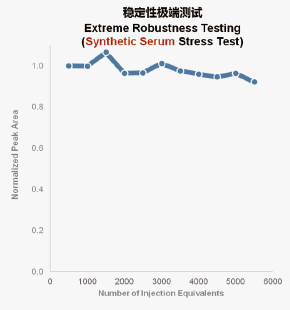Outstanding Quantitative Capability
Unparalleled Sensitivity and Specificity
Exceptional Ease of Use and Durability
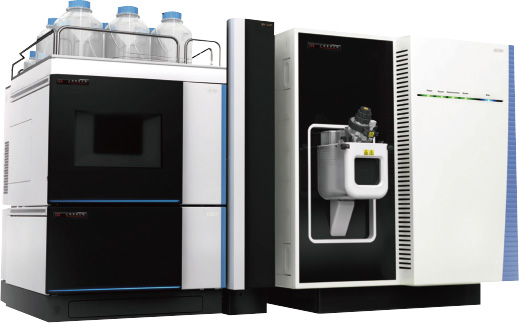
Direct detection of analytes with high accuracy
Independent of biochemical or antigen–antibody reactions
Strong specificity and high sensitivity
Capable of detecting both small molecules and large protein macromolecules at a wide detection range
Enables rapid development of new biomarker detection methods without relying on antibody preparation
Simultaneous detection of multiple substances to reduce cost
Low matrix effects with minimal interference

Indirect analysis method detecting reaction products
Influenced by interfering factors from immune or biochemical reactions (e.g., cross-reactivity)
Cannot detect substances with weak antigenicity or lacking enzymatic reactions
Multiplex detection often subject to interference
Strong matrix effects with more interference
Shanghai Reigncom Biotechnology Co., Ltd. signed a strategic cooperation agreement with Thermo Fisher Scientific (Thermo Fisher) in 2019. Leveraging Thermo Fisher’s technological advantages in mass spectrometry R&D, the collaboration is committed to the joint development of clinical mass spectrometers and assay kits, promoting the application and advancement of mass spectrometry in clinical precision diagnostics.
The RZ-500 triple quadrupole mass spectrometer, together with industry-leading, customized data processing software, is specially designed for IVD applications. Its powerful software system integrates method development, acquisition, analysis, and reporting.
The RZ-500 UHPLC system and advanced autosampler efficiently separate target analytes from complex matrices. Built-in high-precision leak detection ensures laboratory safety throughout operation.
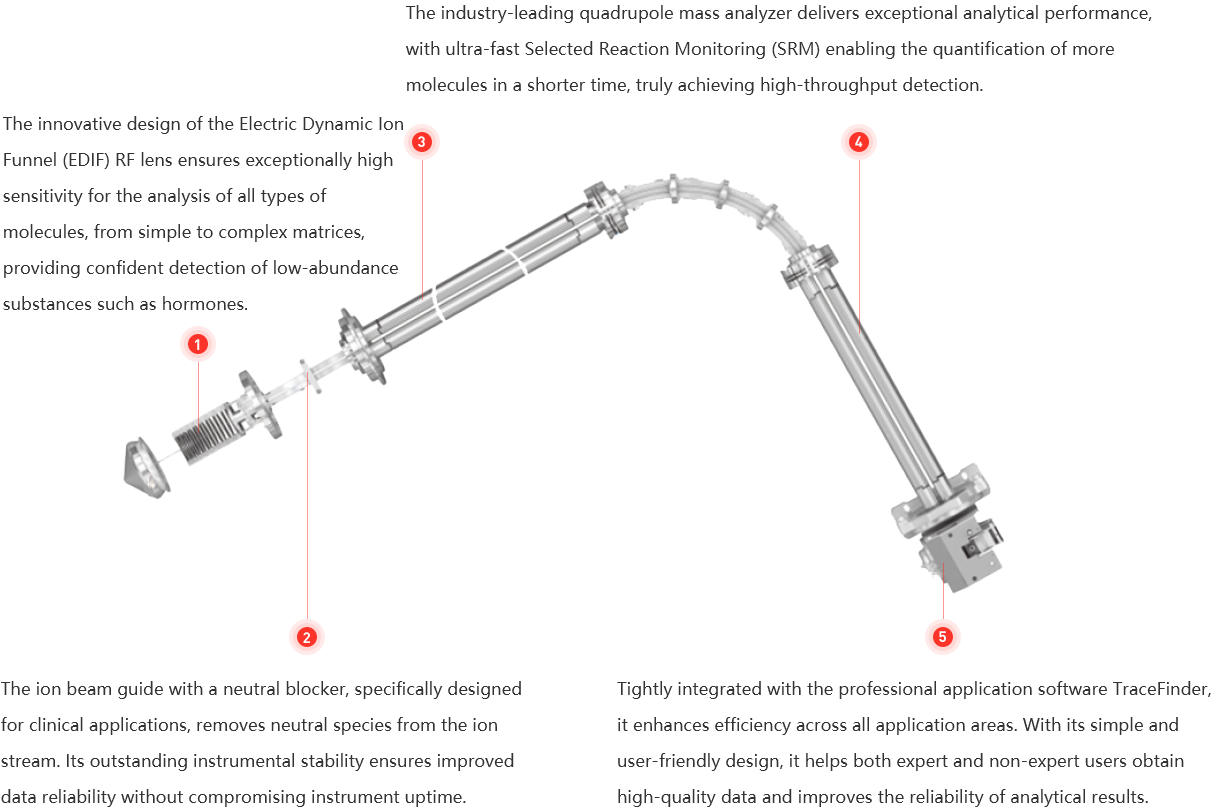
Based on Selected Reaction Monitoring (SRM) mode, the RZ-500 guarantees extremely high specificity (up to 0.2 Da FWHM). Equipped with three quadrupole components, it supports multiple MS and MS/MS scan types, delivering unprecedented quantitative performance.
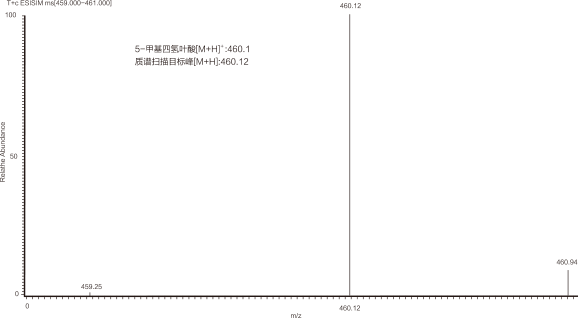
With innovative ion optics and ion source design, the RZ-500 achieves unmatched sensitivity, detecting complex samples at attogram levels (in positive ESI mode, reserpine achieves a signal-to-noise ratio of at least 500,000:1). It is among the most sensitive clinical LC-MS/MS systems available domestically, addressing challenges in low-concentration analyte detection with ease.
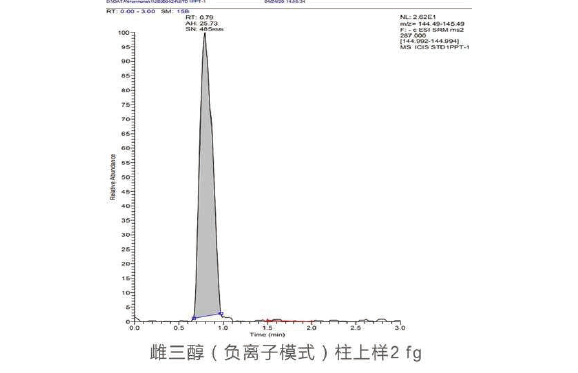
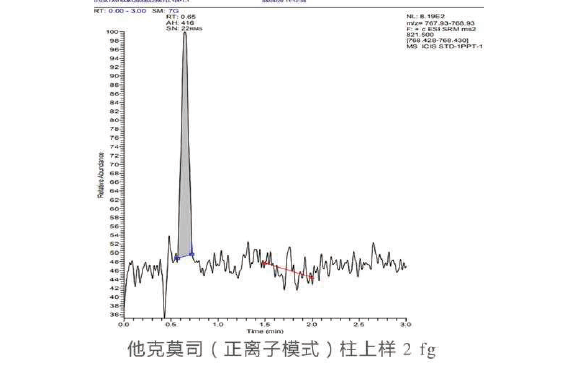
With industry-leading ultrafast scan speed (up to 600 SRMs per second), the RZ-500 simultaneously detects multiple analytes, providing more data points for improved quantitation. One injection yields quantitative data on multiple analytes, simplifying clinical workflows.
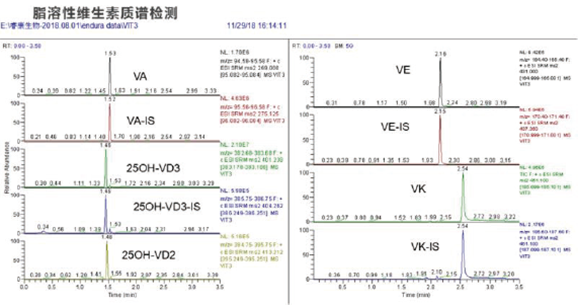
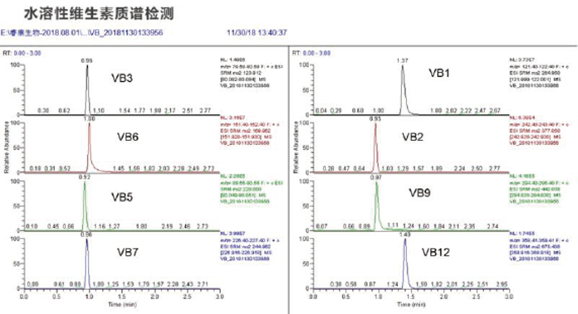
The RZ-500 consists of four main components: UHPLC system, triple quadrupole mass spectrometer, software, and chromatography column.
Holds up to four 96-well plates for nearly 400 samples in unattended operation. Intelligent sample pre-compression ensures excellent reproducibility. Integrated barcode scanning for automated sample identification. Innovative airflow cooling technology, temperature range: 4–40 °C. Cross-contamination<0.0004%; injection linearity: 0.99999.
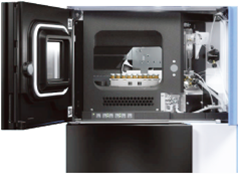
Maximum pressure: 1034 bar; maximum flow rate: 8 mL/min. Six solvent channels, nine possible combinations. Flow rate accuracy: ±0.1%; precision: ±0.05%. Linear motor drive ensures nanometer-level piston control. Hand-tight check valve and automated priming for durability.

Active mobile phase preheating, temperature range: 5–120 °C. Two thermal modes: forced-air (for easy method transfer) and still-air (for sharper peaks and faster separation). New chromatography column ID recognition technology.
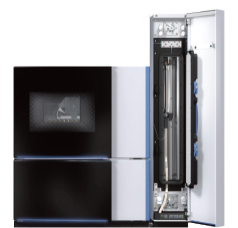
Includes a chromatography column specifically designed for the RZ-500 system—the first domestically produced consumable column with Class II registration, developed for LC-MS/MS systems.
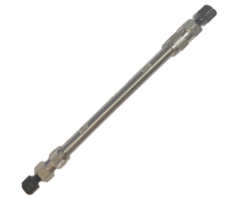
The RZ-500 is equipped with the newly designed OptaMax NG ion source, which integrates a heated ESI source and an APCI source. Switching between ESI and APCI modes is achieved simply by replacing the spray needle. Another feature of the OptaMax NG source is its integrated gas and electrical circuit design—installation automatically completes the gas and electrical connections without any additional operation. The mass spectrometer can also automatically recognize the source type, enabling true intelligent operation. In addition, the electrospray source adopts a 60-degree spray angle, with three-dimensional adjustability (front–back, left–right, and insertion depth). The asymmetric cut-off beneath the ion transmission channel allows excess solvent spray to be rapidly removed, reducing maintenance cycles of the ion source and maximizing robustness during real sample analysis. At the exhaust port of the ion source, a constant nitrogen purge removes more solvent vapor, lowers baseline noise, and enhances overall system durability.

In the ion transmission system, the RZ-500 incorporates three unique designs:
1.High-Capacity Transfer Tube (HCTT): The HCTT features a large, elliptical opening with millimeter-scale diameter. While maintaining efficient desolvation, it transmits more ions into the mass spectrometry system, thereby enhancing signal intensity.
2.Electrodynamic Ion Funnel: Composed of a series of stainless-steel plates, the ion funnel provides extremely high transmission efficiency and excellent focusing capability for the large number of ions entering from the HCTT. Thanks to its independent, integrated design and stainless-steel construction, the ion funnel can be easily disassembled and cleaned.
3.Curved Ion Path with Neutral Particle Blocker: During ionization, neutral particles are generated. If these enter the ion path, they can cause noise interference in the mass spectra and contaminate the ion optics system. To address this, the quadrupole transmission path is designed with a curved geometry and fitted with a neutral particle blocking rod. Charged ions are deflected by the electric field to pass through the transmission quadrupole, while neutral particles, unaffected by the field, are intercepted and eliminated by the blocker. This prevents them from entering the quadrupole mass analyzer.
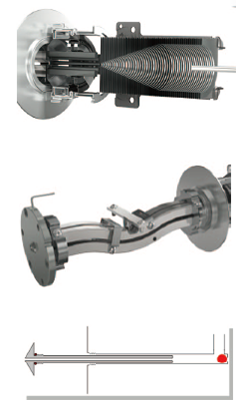
The quadrupole used in the RZ-500 is a large-aperture, segmented, conjugated hyperbolic quadrupole, with a minimum half peak width adjustable to 0.2 Da FWHM. The segmented quadrupole consists of three sections: a pre-filter, the main quadrupole, and a post-filter. The pre- and post-filter sections apply only RF voltage, effectively reducing fringe-field effects, improving ion transmission efficiency, and thereby enhancing sensitivity. In addition, the upper mass range reaches up to 2000 Da, offering unique advantages for certain large single-charged compounds.
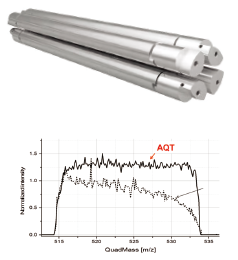
The RZ-500 Q2 active collision cell uses higher-pressure argon as the collision gas and incorporates an axial DC field to accelerate ions in stages. As a result, fragment ions in Q2 not only bend 90 degrees to further eliminate neutral ion interference, but are also accelerated, producing richer and more sensitive fragment ions. This design enables ultrafast scanning at up to 600 SRMs per second.
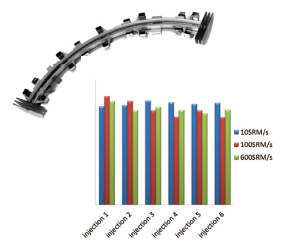
The RZ-500 is equipped with a dual-mode discrete dynode electron multiplier detector, with an increased number of dynodes to extend its lifespan. At very low ion flux, the system operates in pulse-counting mode to eliminate noise and improve sensitivity. At high ion flux, it switches to analog mode to avoid signal distortion. The dual-mode detector automatically and intelligently recognizes ion flux, switches between modes, and performs signal fitting, thus achieving ultra-high sensitivity and a dynamic linear range spanning six orders of magnitude.

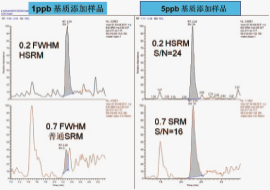 The RZ-500 employs hyperbolic quadrupoles with a field distribution identical to the theoretical quadrupole field, achieving a maximum resolution of 0.2 Da FWHM. Resolution is especially important when analyzing complex samples with significant matrix interferences. For example, in the detection of dicyandiamide spiked in milk powder, SRM scans at standard resolution show distinct matrix interferences in chromatographic peaks, reducing the quantitative detection limit and accuracy. Under high-resolution mode, however, clean spectra can be obtained even at concentrations as low as 1 ppb, enabling precise detection and quantitation.
The RZ-500 employs hyperbolic quadrupoles with a field distribution identical to the theoretical quadrupole field, achieving a maximum resolution of 0.2 Da FWHM. Resolution is especially important when analyzing complex samples with significant matrix interferences. For example, in the detection of dicyandiamide spiked in milk powder, SRM scans at standard resolution show distinct matrix interferences in chromatographic peaks, reducing the quantitative detection limit and accuracy. Under high-resolution mode, however, clean spectra can be obtained even at concentrations as low as 1 ppb, enabling precise detection and quantitation.
AIM technology ensures ultra-high sensitivity and a wide linear range across the entire triple quadrupole system. For instance, in the case of alprazolam, at a sample load as low as 0.3 fg, five replicate injections yielded an automatic integration RSD of 9.5%, with linearity spanning six orders of magnitude.
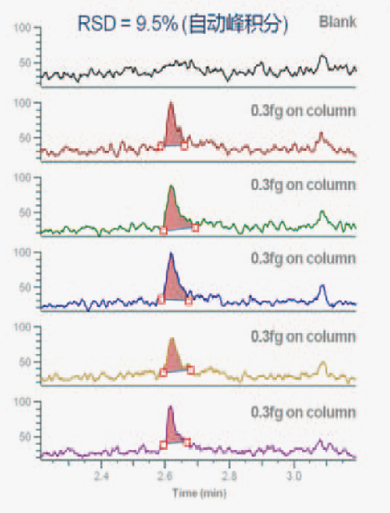
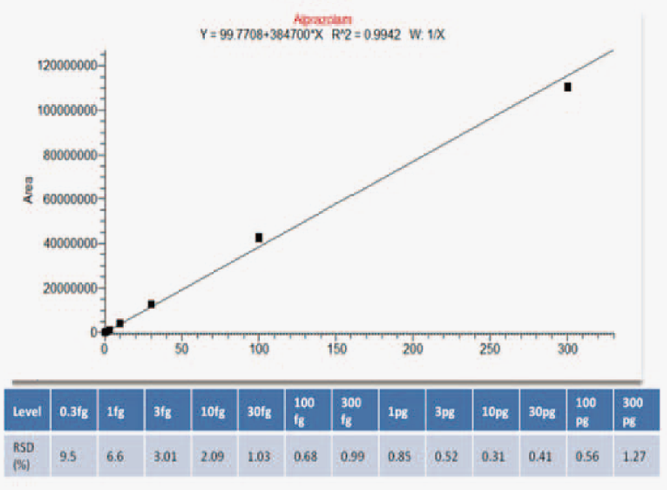
Q2 collision cell includes an axial DC field that accelerates ions in segments, allowing fragment ions to both bend and accelerate within less than 0.8 milliseconds. This design achieves ultrafast scanning at up to 600 SRMs per second with zero cross-contamination, while maintaining instrument sensitivity. Additionally, rapid polarity switching enables stable signals within just 20 milliseconds after switching between positive and negative ion modes.
Curved ion beam transmission design and neutral particle blocking rod ensure exceptional durability. In extreme stress testing with complex human serum samples, after more than 6000 injections, the RZ-500 still maintained excellent signal intensity and stability.
